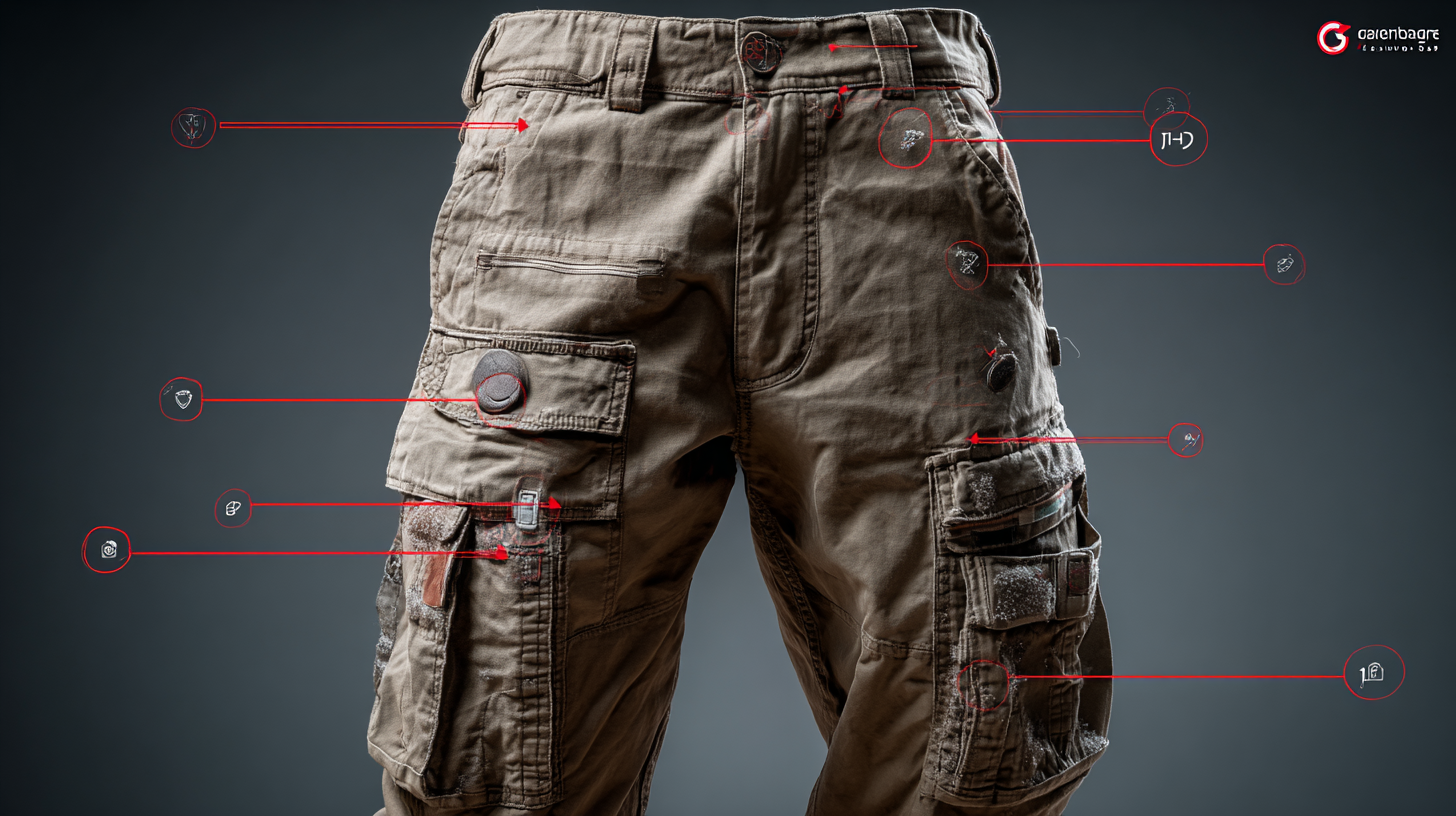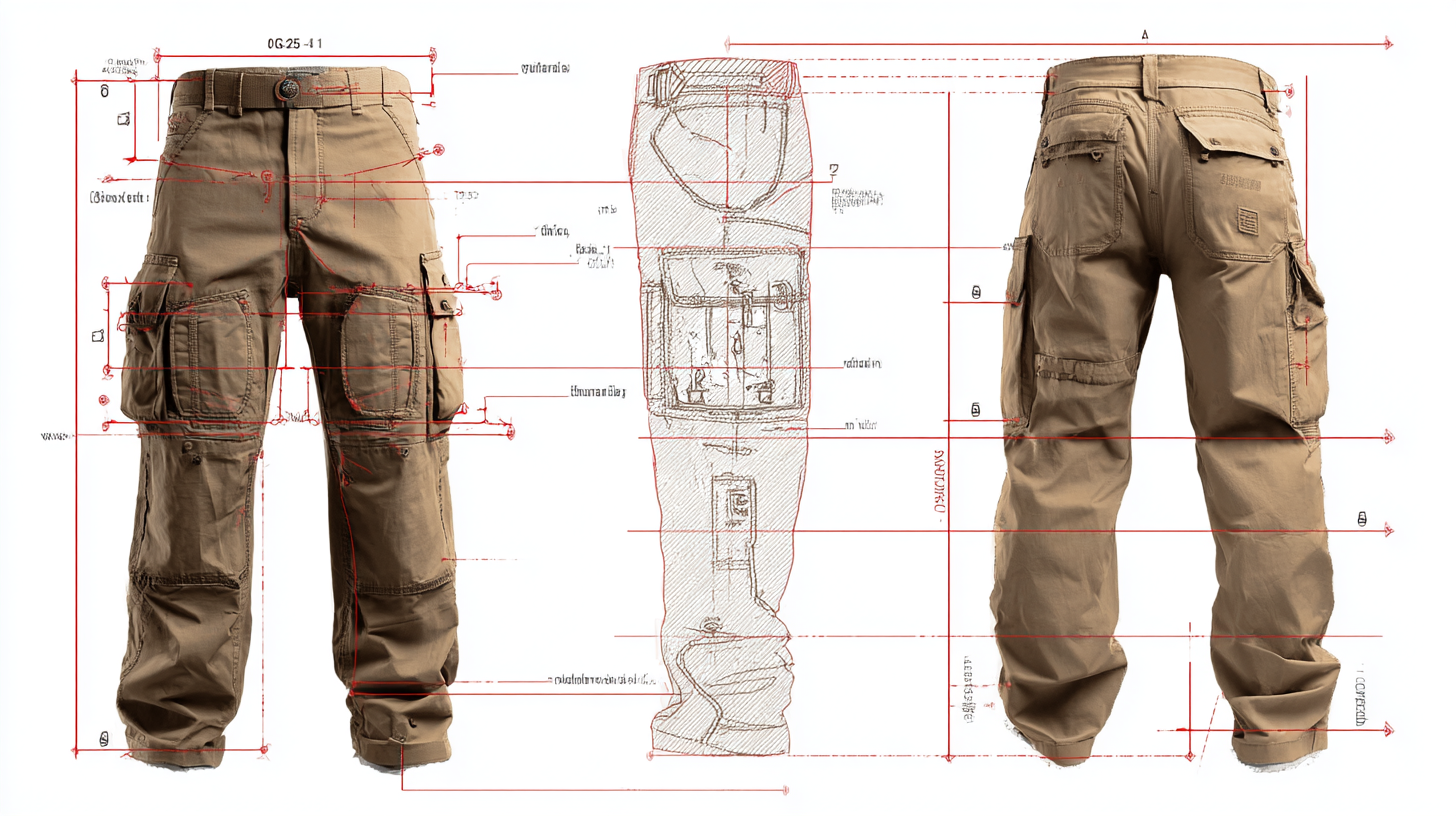Leave Your Message
In today's global marketplace, the demand for high-quality and versatile apparel has never been more critical, particularly for workwear such as cargo pants. According to a recent report by Grand View Research, the global cargo pants market is projected to grow significantly, fueled by the increasing preference for functional and durable clothing among consumers. As businesses strive to streamline their sourcing processes, selecting the right cargo pants becomes essential for combining quality with cost-effectiveness. The reputation of "Made in China" remains steadfast, representing a commitment to consistent quality and reliability that many brands rely on.

This ultimate guide aims to equip sourcing professionals with the insights needed to choose the best cargo pants that meet both global standards and specific operational requirements, ensuring that their teams are both stylish and well-equipped for any task.
When selecting cargo pants for global sourcing applications, it's crucial to focus on
essential features that cater to the diverse needs of professionals.
Comfort and durability should top the list, as sourcing agents often spend hours in the field,
requiring pants made from high-quality, breathable materials. Look for cargo pants with reinforced stitching and
water-resistant fabrics, ensuring they withstand various environmental conditions
while maintaining functionality.
Additionally, consider the practicality of pocket design. Multiple, securely zipped pockets allow for easy storage of
tools and documents, reducing the risk of loss. According to recent industry reports, cargo pants with a smart pocket layout
can significantly improve workflow efficiency, meeting the demands of fast-paced sourcing environments.
Tips:
1. When trying on cargo pants, check for a comfortable fit around the waist and thighs to allow for maximum mobility
during long workdays.
2. Evaluate the color options; darker shades can offer a professional appearance while hiding dirt and stains, making them
ideal for sourcing professionals working in various settings.
When it comes to selecting the best cargo pants for global sourcing needs, evaluating fabric durability is paramount. The longevity and performance of cargo pants largely depend on the materials used in their construction. Fabrics such as ripstop nylon or heavy-duty cotton blends are often preferred due to their resistance to tearing and abrasions. These materials not only withstand rigorous wear but also maintain their shape and functionality over time, making them ideal for diverse environments and rigorous tasks.

Additionally, it’s vital to consider the impact of fabric treatment on the pants' lifespan. Treatments like water resistance and UV protection can enhance the durability and usability of cargo pants in various climates. However, it’s crucial to verify that these treatments do not compromise the breathability and comfort of the fabric. As global sourcing often involves logistics in different regions, ensuring that your cargo pants can handle environmental challenges without sacrificial wear can lead to more sustainable choices and cost-effective solutions in the long run.
When it comes to global sourcing, the variability in sizes and fits of cargo pants plays a pivotal role in meeting the diverse needs of international markets. Different regions and cultures often have unique body shapes and style preferences, making it crucial for companies to offer a wide range of sizes. This not only ensures that products cater to a greater audience but also enhances customer satisfaction and brand loyalty.
Fit is another essential aspect that should not be overlooked. A cargo pant that is designed with a universal fit may still fall short for various demographics. By incorporating adjustable elements such as waistbands, length variations, and tailored cuts, businesses can provide options that accommodate different body types while ensuring comfort and functionality.
Moreover, partnering with local manufacturers who understand regional fit preferences can significantly enhance the adaptability of products in overseas markets. Emphasizing size variability and fit is not merely a matter of aesthetics; it is integral to fostering inclusivity and meeting the expectations of global consumers.
When it comes to sourcing cargo pants on a global scale, cost-effectiveness is paramount. Bulk purchasing strategies can significantly reduce costs, making it essential to analyze various suppliers and their pricing models. Engaging with manufacturers who offer competitive rates along with quality products can lead to substantial savings. Additionally, purchasing in larger quantities often allows for negotiations on price, lead times, and shipping costs, which can further enhance the overall value of the order.
With the logistics industry evolving, it’s crucial to consider shipping routes from major U.S. ports. The East Coast, featuring prominent ports, plays a vital role in the distribution of cargo. By strategically selecting suppliers located near these busy ports, businesses can streamline their logistics operations, reduce transit times, and minimize shipping expenses. Understanding the geography of suppliers and ports can also help in making informed decisions that leverage both speed and cost. Transitioning to a more efficient sourcing strategy not only improves profitability but also strengthens relationships with suppliers and enhances the supply chain’s resilience.

Sustainable fashion has become a pivotal trend in the apparel industry, particularly when it comes to selecting eco-friendly cargo pants for ethical sourcing. As the fashion industry grapples with its reputation as one of the largest polluters, more consumers are prioritizing sustainability in their clothing choices. Eco-friendly cargo pants not only offer practicality with their multifunctional pockets and durable fabrics but also align with a growing demand for environmentally conscious products. When sourcing these garments, materials such as organic cotton, recycled polyester, or hemp can significantly reduce the carbon footprint associated with conventional textiles.
The rise of sustainable fashion brands is encouraging a shift towards more responsible consumerism. Many brands are redefining classic styles, including cargo pants, by integrating sustainable practices into their production processes. This includes fair labor practices and ensuring that materials are sourced from environmentally friendly suppliers. By choosing cargo pants that embody these values, consumers not only make a statement about their style but also contribute to a more ethical and eco-friendly fashion landscape. Embracing eco-consciousness in sourcing practices reflects a commitment to protecting our planet while still enjoying stylish and functional apparel.
| Fabric Type | Weight (g/m²) | Sustainable Certification | Recycled Content (%) | Water Resistance | Price (USD) |
|---|---|---|---|---|---|
| Organic Cotton | 180 | GOTS | 100% | No | 45 |
| Recycled Polyester | 200 | Global Recycle Standard | 85% | Yes | 60 |
| Hemp Blend | 220 | OEKO-TEX | 50% | No | 55 |
| Tencel Lyocell | 150 | Lenzing | 100% | Yes | 70 |
| Cotton Canvas | 300 | Fair Trade | 0% | No | 40 |
